Not so Good to WorseApproaches to applying new digital innovation with healthcare delivery must evaluate the entire end-end user experience and supporting IT/infrastructure (legacy and newly commissioned). Existing points of care and patient engagement may not currently be ideal, but could get must worse if not done correctly. Companies too often focus on applying new technologies to an area of their workflow, but fail to assess the impact on the patient experience or other required components to ensure adoption, retention or accelerated abandonment. Digital health innovation affords organizations with new opportunities to improve things and streamline their business process. Many only focus on certain aspects or other siloed parts of their organization that are not equally transformed. I had 2 real bad experiences recently that highlights this challenge as healthcare organizations tip their toes into digital health. Too Many Minutes at CVS Minute Clinic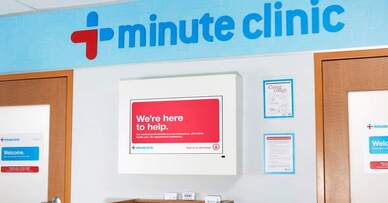 After being on a Shingles vaccine waiting list with my PCP for over 6 months, I decided to take things into my own hands. I confirmed that my local CVS Minute Clinic had the vaccine in short supply elsewhere. I was unable to attend my second scheduled dose administration and tried to contact them to change my appointment. 4-5 call attempts later after navigating through a myriad of IVR menus, I reached the peak of my frustration with not being able to either cancel, reschedule my appointment, or be connected to someone at my local Minute Clinic. Thus, I did not feel bad about missing my appointment. I got a call several weeks later more interested if they should keep the 2nd dose vs. reschedule an appointment. The second time I just did a walk-in visit where they may be more optimized around. Bad news again, I went online to cvs.com to confirm my local Minute Clinic was open during my planned visit. Unfortunately, when I showed up I saw a paper note over the kiosk indicating their Nurse Practitioner called in sick today and to try back again tomorrow. Sure, I don't mind getting in my car and driving down to check to see if someone called in sick the following day (really?). This is not a digital experience. 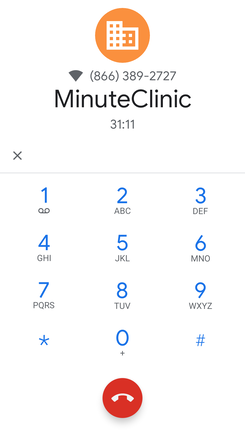 Aside from getting sick with my second Shingrix dose (flu like symptoms except for a normal temperature, but still better than getting Shingles), my 2nd bad experience with Minute Clinic stemmed from receiving a bill for my vaccine since they did not have my correct insurance info. It took me close to 25 minutes to speak with someone eager to remedy a payment inquiry and then finally reconciled the issue on the call after 31 minutes. They have cute little kiosks in their clinic that help with self-service check-ins. I can only image how much they invested in this kiosk development, but failed to consider the dead end with patient engagement around corner cases like rescheduling or questions that they should realize will arise. With each of my 4-5 call attempts to their Minute Clinic customer service phone number, I tried to navigate to both my local clinic or talk with a live person. I got a horrid generic voice message often times providing absolutely no value to me as a patient and customer. During both of my visits, they were training young Nurse Practitioner to feed their attempt at a low cost delivery model that likely is a key workable business model determinant. Lesson to be Learned: Examine the end-end Minute Clinic user experience including calls to action, entry, exit points, required service operations to address certain workflow, and invest in a meaningful customer pilot to uncover dead-ends and poor customer satisfaction points. These warts were not hard to find. On a Quest for my Diagnostics Test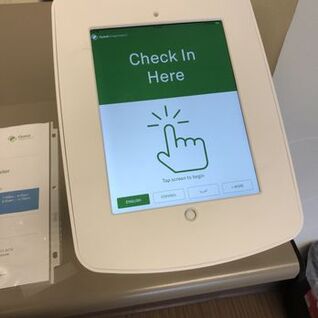 I received a paper order for a diagnostic test after a visit to a healthcare specialist in Boston. This was a familiar test I had done before so I thought it would be a breeze to do the test at a more local Quest Diagnostics near my home. Cautious me, I went online to confirm I could do this test at my local Quest office. The super generic info I obtained did not instill confidence this would be achieve without issue. I decided to give Quest a call to confirm they had this test at this select location before trekking it over to their office. Again, I traversed through multiple levels of the Quest IVR customer service phone support trying to connect with the local Quest office and only got a general call center support staff member. I was pleasantly informed by the customer service representative that all Quest facilities have the necessary testing capabilities for any order that can be placed with Quest. I took my paper order form to my local office, saw the cute little Quest kiosk tablet at the office for me to check in (devoid of any Quest staff in plain view) and waited for my test. A woman popped out of a door to have me come in to only find out they were wrong and do not have my test my doctor ordered. They said I could come back after they order the test and I was super happy with the opportunity to traverse through 2 neighboring towns back to their office. When I asked if I could call them to check on the status of my test, they indicated they do not allow direct calls. They said they would order the test, but not sure when it would come in. Putting my name down on a Post-It note to call me did not instill confidence in their process. Lesson to be Learned: Don't focus exclusively on sexy new digital engagement tools and opportunities to cut cost from your workflow or operations. Think about customer touch points and points of automation and required person-person engagement in some scenarios. Make sure all digital points of patient ingress are connected from a data and integration perspective.
3 Comments
Here is a log of my dreadful experience today that should be great inspiration for change within Verizon if it still cares about its consumers amid further dwindling differentiators besides price. On a rainy Sunday afternoon while doing other errands, I walk in to Verizon Wireless retail store here in the Boston area to buy a new Pixel 3 in order to replace my old Pixel phone given the battery gets me only to about midday. This is a Verizon owned store and not an authorized retailer, so I expect better service and deals there.
The store sales rep told me I could get a “special” $300 off by trading in my old Pixel phone that net out to $580 after handing in my old device. I proceeded to do that but he had to order it since they did not have the white phone in the store. I would have to come back into the store vs. the convenience of shipping to my house if I ordered in online. OK, I guess I could manage that. Upon arriving home I noticed my order confirmation email and tried to click on the track order status link. That of course did not work, but I proceeded to check the offers on Vzw.com. To my surprise I noticed I could get $300 but that would net to $499 and I would not have to trade in my old phone. Not bad given I could sell my old phone for ~$100 and my net purchase would be $399. I would think retail stores and online reps would have some common alignment (maybe free home shipping as benefit with the later). They seemed to both be in the dark about other sales channels. VzW.com chat agent said she can help me take a new order and cancel the store order. After about 7 min, she realizes she can’t seem to cancel it and I must do so myself. I have to ask her how to do that. She then directs me to call *611 on my phone. I go to do that, but my phone dies since an old battery is the reason for my new purchase. I have to restart and recharge. *611 call to their IVR redirects to a digital assistant on my MyVerizon app on my phone asking for all sorts of info that is not useful. *611 call continues to hold and then connects me with a live agent (it is a real person!) I explain to the agent I want to cancel my order from the store and she proceeds to try to convince me not to since that order has a $300 discount, which she says is “great”. I had to explain to her that online offers are better and I can keep my old phone. She finally agreed to cancel my order. Agent then puts me on hold after having difficulty canceling the store order and that call now is 14 min long. Chatbot app assistant on my phone app keeps uttering non-sense Live chat agent on VzW.com keeps asking me when I am ready and keeps checking to see if we can proceed (I must be killing her customer service metrics and hitting her incentives). She tries again to walk me through canceling the order online, but no option to do so when I walk through the website after logging in. I ask her to escalate and they send me a link to a different customer care department. 32 minutes into the call center call they say they need to put in a ticket and wait 5-7 business days for a resolution. 37 minutes into the call I get a manager on the phone. I repeat an explanation of the issue and she then tries to call the retail store. I go back on hold. 45 minutes later, the customer service manager asks for my PIN. 1 hr 2 min into my call the manager attempts to take a new order (will have store cancel their order upon arrival since they need the device ID), however her screen does not now allow her to take my order and then suggests transferring me to another rep (I plead not to do so since I fear the 1+ hour history/context of my issue will be lost). I also fear my battery plagued old Pixel is going to crash mid-call. Vzw.com chat agent times out and then asks if her services to me was 10 out of 10. 1 h 26 minutes later a different customer service rep takes my order over the phone using an upgrade on a different phone to skirt the issue. I appeal to them to credit the $30 activation fee given I have more than earned it. What a horrible experience and it felt like 4 black holes (call center, online assistant, chatbot on my phone, and Vzw.com self-service website). Thank God for a warm cup of coffee, browser multi-tasking to catch up on email, and no longer owning any Verizon stock. 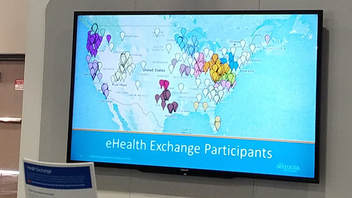 I have been tracking the Provider footprints of Care Equality and CommonWell alliances and it is great to see continued progress on EHR interoperability beyond the technical standards innovation with HL7 FHIR APIs. Zoom into the NYC / Boston area on the CommonWell area coverage map that gives you a good sense of this progress. The profiled activities in Healthcare IT News last week just scratches the surface of the potential impact. Standard agreements among Providers and streamlined patient access are the only missing components in my mind that will extend complete ubiquity in the US. New digital health innovation layered on top of this new era of interoperable EHRs will be demanded by Providers that will further ink this progression. It will be interesting to see if this momentum spreads internationally where there has been lacking government EHR subsidies to kick start some level of greater adoption and more disparate market/regional structures and government control health systems that create barriers and insulate old, more dated clinical information systems. Apple's recent Health Records announcement is based upon the same underlying FHIR APIs and there is a suite of other SMART application / integration innovation in the works, and a rejuvenation of the notion of Personal Health Record (PHR) that had failed in the past due to this interoperability issues. I suspect this very well could be the start of an accelerated shift towards the EHR being pushed into the role as just a data repository in lieu of new web dashboards highly optimized for each clinician workflow (primary care, specialists, ER, surgical units, etc) and mobile apps centered around embracing untethered mobility. Yes, this means fewer Providers should have to initiate $25M EHR vendor customization efforts and lucrative support contracts. Think how much easier it will be to layer value on top of EHRs and differentiation based upon a suite of clinician and patient engagement tools, data analytics, inferencing, clinical decision support and population health. Yes, the likes of Epic, Cerner, and Allscripts have plenty of integration and customization project work in their pipeline, but they could be commoditized as just infrastructure in the new digital health of the not too distant future. Finally, wouldn't it be a beautiful thing if we got an actual meaningful reduction in clinician clicks during their day and as patients got more eyeballs our way during doctor appointments. 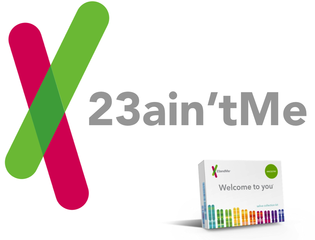 High on expectations for uncovering more information surrounding my genealogy, I recently decided to purchase the upgrade from 23andMe Health genome service that includes their ancestral mapping. I was pretty confident of many family bloodlines, including personally tracing 13 generations with my Dad and a great aunt who lives North of Quebec City who only speaks French to uncover our first relative who came to Canada in 1647. Performing such an exercise induces added pride in where you came from. So, you might understand why I was so disappointed when 23andMe did not capture a single trace of French Canadian when it should have approached 50%. Ok, so maybe they only classify this as originating from French European since they did come from the Normandy region of France. No such granularity. The best they could do is 9% French & German. Turning to my mother's side, I know my grandfather was from an island off Sicily. Unfortunately that 25% of me only garnered less than 10% Italian. Finally, we had some family folklore of some distant Native American in our lineage. That was wishful thinking also with the balance of what was reported being British & Irish, Balkan, Iberian, and vague categorization as Broadly Southern European, Broadly Northwestern European and Broadly European. Then came all the jokes I was adopted (fortunately I look a lot my my Dad). 23andMe should remain focused on their Health report which is very comprehensive for meaningful genetic health risk indicators for diseases, disorders, wellness, and cute things including likeliness for cheek dimples, a unibrow, freckles, cilantro taste aversion (must have passed that on to my daughter), and asparagus odor detection. What the heck have they been doing since the FDA early on had clawed them back to just ancestry reporting? I would have thought they subsequently had applied more effort there. So while I do feel blessed my Heath report came back good, their poor Ancestry granularity and results makes me question the accuracy of their flagship Health service. I have since learned that Ancestry.com genome services does have much greater granularity and will likely do some more spitting in a cup to seek some sense of genealogy salvation. It also looks like 23andMe no longer lets you just buy the Health service (not worth any sort of $40-$100 bundle uplift price in my opinion). Buyer beware as we venture further into consumer driven digital healthcare innovation. The future is however bright with continued advancements in genomics, proteomics, growing registries / databases of diverse profiled populations, machine learning, and inferential analytics. Something as technologically complex as genome sequencing is being commoditized and one can now dynamically rent time on a diverse network of available genome sequencers across the country, which lowers the capital equipment barriers to entry for innovators. Meenta is the Amazon / Azure cloud of genomic sequencing. Let's hope we can begin to effectively map the human biome with good and bad bacteria, immunology, and one day psychosocial-emotional-behavioral triggers one day. While so many that embark upon their exploration of colleges are enamored by the stature of highly esteemed, private universities, they often do so without a strong sense (or clue) for their career aspirations or if such schools are a good fit to meet merely a hypothesis surrounding their desired career path. The total cost of attendance at such named private universities has surged upwards to $65k+ / year (many elite and most selective now exceed $70k / year according to www.collegedata.com). This places a huge amount of risk on spending over $250k on an education that may not produce fruit and create overarching stress and anxiety on students and parents. Aside from questioning the ROI of such a large investment, other factors such as student empowerment and career path validation are big challenges. I am not saying such elite or private colleges are bad or those who choose to fund such educations are wrong. I do think many get caught up in the romance of named schools, inflated expectations on what such schools do for their children, and for some trying to keep up with the Jones to do what they think is the very best for their children. If a college bound student has experienced first hand work life in their desired course of study and they are 99% certain it is a match, it may be worth such an investment as along as any debt the student/parents take on has a realizable payback period. It is great if say a high schooler gained insight into the accounting profession from their uncle who is a CPA, they are able to work part time or over a summer in their office to confirm their interest, they get substantial help from their parents who have the means, and can see their way to a respectable salary to rationalize a private college. Alternatively, if you are able to obtain meaningful scholarships or financial aid your investment risk can be minimized. However, I think for a large, growing percent of the population there may be a better way through a Lean Education. Lean is Not Just About Money The financial impact of having to fund 2 - 3 children through a private college education can indeed be overwhelming and substantially change parent's retirement plans and lifestyles, not to mention the rainy day fund for unplanned expenses like having to care for an aging grandparent or their own unexpected medical conditions that may arise. Young parents with 4 - 5 children are especially faced with a daunting reality given where colleges costs will be in 10 to 15 years. The attractiveness of a $25k / year (possibly less than $13k for a commuter or if scholarships/aid are awarded) in-state public college education puts things in perspective for those with amplified responsibilities. Following a lean approach, the time value of keeping $100k - $150k per child invested in the market or avoiding debt can't be underestimated. However, even if you are fortunate to have ample financial or scholarship/aid resources, there are many other benefits to a Lean Education including:
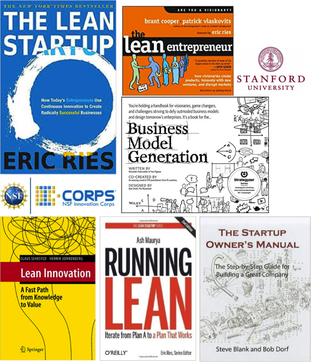 Lean Innovation Analogue For those of us in the technology sector, traditional methods for product/service development and entrepreneurship have evolved towards Lean Innovation and some learnings can be obtained for following a similar mindset towards education. Much has been written about Lean Innovation, including such things such as design thinking, agile methodologies, Google sprints, and the Lean LaunchPad curriculum at Stanford. Lean LaunchPad has become the basis for the National Science Foundation I-Corps program that spawns entrepreneurs from university researchers. Along with the Business Model Canvas tool and use of the scientific method, Lean Innovation has made its way to many large corporate enterprises. In lieu of pursuing things like waterfall style commercialization steps (ramping up large teams / cascading processes / investment with success heavily predicated on non-fully tested hypotheses), Lean Innovation embraces more experimentation and iteration throughout while in search mode where you are operating in the unknown. Once you de-risk things like the value proposition, feature sets, business model and technology feasibility, it is then all about execution on the known where added investment is warranted. Here is a summary of more Traditional vs. Lean Innovation approaches: Surging College Bubble With increasing numbers from those seeking post secondary education and international students coming to US, demand exceeds supply at most colleges that will continue to drive up college prices. This price inflation is even greater at private vs. public colleges. Most named private colleges are fine tuned around profitability with growing endowments, research budgets, and cutting edge building projects. At what price point does this change to where you see a downward shift in enrollment or the bottom falls out of student debt programs? I believe we are starting to see an early shift of more high quality applicants choosing to attend more economical public colleges. Evidence of this can be seen by the surging GPA and SAT scores at many of the more well known public university programs. For example here in Massachusetts, while UMass general entrance requirements still have a disparity with more well known Boston area private universities, their nursing, computer science and Isenberg business school has dramatically become nearly just as competitive. You cannot blame young inspiring minds for aiming high and seeking to attend elite colleges to live up to their parents' expectations. Most parents draw from their own historical experiences and perspectives, which are very stale and not calibrated with this college bubble. It is hard amid our busy lives, but a good majority of parents need to take a more active role in college planning, ROI discussions, and most importantly career inspiration and exploration. Most high schools fall short on career exposure and planning with too much focus on just the mechanics of the college application process, teaching to the tests/standards and rigid curriculum centered around propping up their test scores in order to make their school district look good. So many careers are represented by the collective set of parents in the district and I am surprised more guidance departments do not arrange job shadowing programs. This is a lost opportunity since students could explore different types of jobs first hand throughout their high school journey. 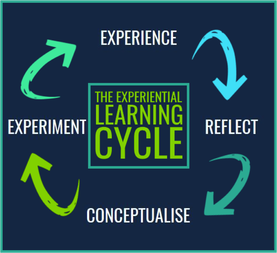 Experiential Learning and Skin in the Game Lean Innovation is centered around more rapid iteration of a "hypothesis, build, measure and learn" feedback loop. Experiential learning follows a similar cycle that applies to both curriculum concepts as well as your desired overall career focus that starts primarily with just hypotheses for your likes, dislikes, and perception if you have the required skills and stamina. The goal is to optimize this learning cycle to get out of the unknown more quickly to de-risk all sorts of things. My alma mater Northeastern University has been at the forefront of experiential learning with its long history as one of the first and few co-operative education schools in the US. Maybe this (along with the desire of going to school in Beantown) is a reason why they recently received 51k applications for 2.8k freshman seats. When both my father (also an alum) and I attended NU, it was known as a blue-collar or working person's university for folks seeking the co-op experience or a more economical big university option in the Boston area. My father worked his way through school to be the first in our family to graduate from college. I too gained an early appreciation for money by having to fund part of my education that made me take things more seriously and be fully in control of my own destiny. Aside from graduating pretty much debt free, my 1.5 years of undergrad co-op experience also enabled me to:
Today, NU through this recipe for experiential learning success, has grown through the rankings to become a more elite school. So too has tuition climbed as a private university that is challenging its ability to deliver an ideal Lean Education. While on college tours with my oldest child, I heard nearly every school pitch some form of experiential learning (made me feel real good about my own NU decision many years ago). When you peel back the onion at most schools, they are moving in the right direction, but are still only marginally better than glorified internship programs and senior capstone projects (both of which are much different than a school oriented around co-op). More colleges are starting co-op programs, but they often tend to be limited to the high demand career fields (computer science, engineering, business) where universities are able to most easily build and maintain corporate partnerships. They also tend not to transform their co-op program into a broader experiential learning philosophy. Experiential learning with integral paid job training helps directly connect students with tangible incentives and motivation. Do better in school and on work assignments and get better co-ops/internships. Obtain near-term satisfaction by connecting a learned classroom skill with job performance. Students also take more ownership when they contribute financially to their own education. All these points support the theme of students having more skin in the game. Managing Downside Risk Most of us have heard sad stories of students graduating with an expensive degree to only find out they hate their chosen career, can't find a job with a liberal arts or medieval art history degree, end up working in retail as a stop gap, or quickly learn they need another degree to land their desired job. Unless you experience this first hand as the student or parents, I am not sure you can truly understand the impact to your emotional state, family relationship, and financial well-being. There is way too much stress placed on students these days. Having the student graduate in such a state of mind after 4 or more years of hard work can be debilitating short and possibly long term. In the business world, the equivalent of such failed investment would likely be met with severe consequences. Whether it is $70k or $25k / year, vetting your headed down the right path early and often is key. This includes identification as soon as possible that college is not the right match or a gap year(s) may be warranted. Additionally, college investment at say an in-state $25k / year affords the student more opportunity for exploration or pursuit of a double major or several minors, even if it takes an extra 2 or 3 semesters. For some, a skilled trade may indeed be a better option and pathway to happiness with their college money put to better use supporting them in other ways. MVP (Minimum Viable Pathway) As folks realize later in life, your initial career focus rarely stands the test of time. People tend to pivot once they get their feet wet and get exposure to things they have no visibility into while in college or high school. Opportunities present themselves over time to motivate people to go outside their comfort zone that often has different education and experience requirements. Additionally, other priorities such as family life or stress levels impact career decisions. Of course there is also the Mark Zuckerberg and Bill Gates syndrome to cut to the chase on your passions (as long as you have the entrepreneurial bug in your belly at such a young age). Similar to building a house, an undergrad foundation should provide ample footing to build upon. In your first job, you are adjusting to work life, assessing your strengths and weaknesses, assessing if excitement or boredom prevails over time. No one knows what they will desire 20 years into the future. Your undergrad education should minimally qualify you for your first full time role you "believe" to be your best career path from the experiential learning obtained in college. I have tended to look at specific job roles and industries in 2 and 5 year windows, respectively. Given that you are likely to pivot early in your career, the lean method would point to minimizing your investment and time to start your career experience while still enabling you the flexibility to learn and navigate toward your ideal job preferences over time while earning a pay check. I equate this to an MVP (Minimum Viable Pathway) to set you off in the right direction. Upon graduation with my BS, I learned I was already doing Masters level engineering work in my first full time job and that passing on that advanced degree had been the right decision. Over the next 5 years I gained exposure to many other engineering, sales, marketing, operations roles and explored graduate school options (both patent law and an MBA). Only after direct added exposure to both career paths did I realize blending my technology background with an innovation focused MBA would propel me to a greater realm of opportunities (new foundation) and career pathways I could enjoy. I came real close to attending law school, but was blessed to realize I would go nuts buried in patent/IP proceedings and only on the peripheral of new innovation. I was fortunate to find a tech MBA program that embraced experiential learning (and fortunate my employers paid for most of my grad schooling). Along with evolving work experience, my combined undergrad and newly minted tech MBA afforded me the flexibility to continue my exploration in securing engineering management, product manager, marketing and business development roles. The obtained savings from an undergrad Lean Education can be applied towards a graduate degree, seed investment in a startup business idea, wedding, or down payment on a house. An MVP can apply to grad school also. What Have You Done For Me Lately? I have interviewed hundreds of people, including recent graduates from all sorts of schools and more seasoned professionals. While viewing a great GPA from an elite named university on a resume can be an indicator of book smarts, I am more interested in finding relevant work experience, other characteristics of transferable skills, and personal traits (integrity, work ethic, approach to critical thinking, and social skills). Yes, having a degree from Harvard, MIT, Princeton or Stanford might get you more in the door at some employers for your first job. However, unless you are targeting a tight knit industry like venture capital, this impact will dwindle significantly over time and is trumped by relevant work experience and social skills. So is spending 2 to 3 times the cost of a Lean Education on a more expensive private university a worthy investment of money and time? I content the benefits of a lean approach most often outweigh the substantial downside risks with traditional ideal college preferences and todays college bubble. Summary of Traditional vs. Lean Education Here is a summary comparison of my view on traditional college pursuits versus a Lean Education and hope more young minds and their parents consider the latter approach. Coming out of the HIMSS 2017 healthcare IT event in Orlando last week, it is a good time for reflection and to assess areas of focus. Only time will tell if we are at the cusp of a Perfect Storm in healthcare innovation. Here are some soundbites that caught my attention: "increase clinician-patient engagement one minute at a time", "increase joy in clinician days to address surging burnout", "cognitive healthcare era", "augment not replace human intelligence", "most everything patients do is cogent to their self image", "designing for emotional connection not just physical needs", "need dedicated, extensible and agnostic data tier outside EHR", "motivation is desire with velocity" and "health is social". Many key factors are in play that could fuel dramatic change within the industry. We now have access to a wealth of available Technologies in the form of platforms, open source / licensed tools, frameworks, open APIs, growing interoperability, and consumerization has brought modern web, cloud, mobile and device innovation to healthcare. People have accepted that Digital Health innovation is a key pathway to driving lower costs, improving outcomes, quantifying and realizing value based care models, and increasing patient / clinician engagement. As such, Investments are more fluidly being made in Digital Health including with Providers, medical device manufacturers, pharma and other segments of the industry. This is further supported by the strong venture capital/PE, angel and seed startup community, as well as a wealth of startup incubators. At the heart of this new wave of Digital Health innovation is both incremental and dramatic New User Experiences all along the healthcare value chain. New technologies definitely help here, but the big gains come from a streamlined understanding and expression of patient, clinician and other care team member interaction with each other, systems, devices and every meaningful thing at our fingertips from the Internet. An army of UX / UI designers are being employed in this newer generation of products leveraging lean innovation and design thinking concepts vs. the historical ways of bottoms up engineering rollouts or waterfall product development that handicaps many legacy products and systems that fall short on many fronts. With lean innovation comes more experimentation and customer validation to ensure success and participation is high on new offerings. This is key, since Outcomes = Participation * Efficacy. Walking the show floor and attending many of the educational session, there clearly is an abundance of smart and motivated People to drive change if they are empowered within their organization or nimble and sufficiently funded to seize a wide range of external opportunities. There is also no shortage of new healthcare incubators and accelerators that is drawing in young talent with inspiring passions to help improve the world.
It is in this last point where I see people supported by their company as Healthcare Market Makers emerging more over the next couple of years. While there is indeed uncertainty with the newly elected administration in the US (ACA and new policy), regulatory bodies, Payor environment and growing cybersecurity concerns, these all represent changes and opportunities for entry of new solutions. Yes, many large organizations will be slow and resistant to move, but it is these market makers that will define, develop and deploy new innovation starting in small ways that will begin to bear fruit. Others will pay notice and look to replicate, especially with a similar technology and UX underpinning. Market makers (whether it is new tech firms, large incumbents that shift more to play offense, Provider organizations, etc) will 'poster child' their successes for broader realizations. There were some good examples at HIMSS of successes, but more need to be showcased beyond a pilot stage. Additionally these early adopters can't stop where a finite project ends. They must replicate their initial implementations on great scale and impact. An ideal leader in such a market maker company likely has a real strong set of business development and technology innovation skills. Let's stay positive on driving change with what is now before us and think of ways we can become healthcare market makers.
Samsung Recall
Key Features:
Final Word: Check out this hazmat setup below that Samsung sent me to send my original Note7 back. I know most consumers have returned devices to their local wireless retailer. But for folks like me or online purchases through Samsung, I wonder how many consumers will follow these instructions. It also makes me wonder why more products with Lithium Ion batteries do not come with such special handling. It was not like the Note7 is going to be powered on and charging while in the box back to Samsung. I suspect this return packaging (including special outer fire-retardant box, within a box, within a box, rubber gloves, etc.) cost them some serious coinage and took as long to design / procure as the fix to the Note7 battery. Mobile Integrity recently launched an exciting new partnership with the team at Brandwidth Global to focus on enabling deeper connected healthcare experiences for users across the value chain. We have come together as Healthy Context, LLC. With today's lower barriers to entry with many new enabling technologies and rapid innovation cycles, how does one differentiate a new product or service offering? Well, your competitors are likely reading the same research reports, getting similar feedback from customers on pains/gains, conforming to the same regulatory/compliance requirements, reviewing industry best practices for design, and trying to use as much "out of the box" capabilities when deploying new platforms. Within the Digital Health realm, successful new offerings must address user adoption, retention and efficacy. User experience is key to all three. Two functionally equivalent offerings can yield very different experiences for patients and clinicians. Most marketers do not have the skill to fully capture and understand user needs that may be layered deep within innate human behavior. Getting users Hooked on your new product/service may require this deeper level of user understanding. Ensuring a meaningful Connected Health experience surrounding a new therapy, chronic disease management program or new model of care delivery will likely require more radical vs. incremental innovation. Probing deep into user behavior requires different skill sets from varying social sciences. Once these deeper human insights are uncovered, they are instrumental to help prioritize product and service roadmaps. Too often we are over-engineering solutions and must make hard choices for the right feature set to drive the user experience. Thus the growth in the concept of an MVP (minimum viable product). User experience design can be very opinionated. Bringing patients into a staged "cleanroom" setting to observe and define needs may miss key user actions and conversations within their native environments. Harnessing cognitive science, behavioral psychology, cultural understandings and linguistics can uncover unique user needs with science based rationale to drive experiences and innovation roadmaps. Healthy Context fuses together the deep human interpretation expertise of Brandwidth Global and the Connected Health technology innovation practice at Mobile Integrity. Over the years, Brandwidth Global has been breaking new ground uncovering game-changing user insights that has fueled a range of new successes within the pharmaceutical industry. Mobile Integrity has been at the forefront of helping define and launch new Connected Health innovation for medical device manufacturers and healthcare providers. Collectively, we now have the capability to raise the bar on expectations for new Digital Health offerings, adoption models and harvest the many benefits of deeply engaging experiences on the pathway towards chronic disease management and rehabilitation. Stay tuned for more info coming on Healthy Context!
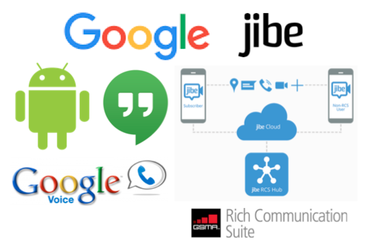 I believe there were several motives that propelled Google to pull the trigger this past week on acquiring RCS player Jibe. This is part of their multi-pronged attack on the consumer need for communications and interactivity. Having worked at Verizon Wireless to help define their Rich Communications strategy and service realization back in 2010, there are a range of drivers that come to mind that I note below. As with many mobile carrier efforts, the GSMA's Rich Communications Suite (RCS) has been plagued by slow adoption and weak execution. Even after watering down the original (more feature rich) version of RCS, carriers struggle with embracing and driving consumer adoption for the suite of new enhanced messaging services enabled by RCS. Google has had its hand in driving adoption of WebRTC however on the desktop browser front. Some of this carrier challenge with RCS is due to their DNA being primarily a mover of bits and wireless infrastructure engineering expertise, but also due to their loss of control of the handset. Today, there is very, very little Verizon, AT&T, Sprint or T-Mobile content or customization on your latest smartphone here in the US. There is even less carrier content that actually gets used or adds value to the consumer. Voice over LTE (VoLTE) is going to happen and that is the last opportunity for carriers to layer in some value-add around their investment in IMS technology with integral voice, video chat, rich messaging, voicemail transcription, multi-ring mobile / landline, and presence indicators. Enterprise Unified Communications is a different beast. Carriers may not gain from Google's push into RCS here, depending upon Google's ultimate motivations. Similar to what I am seeing with my efforts in the mHealth / Healthcare IT space with a vast amount of wearables devices, mobile / IoT platforms and the array of clinical systems / EHRs, this is not a technology problem. It is about integration / compatibility, organizational execution and the right inspired innovation around an overwhelming amount of available technology and platforms. Here is my view of Google’s drivers behind scooping up Jibe:
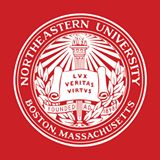 Here is a short piece I wrote profiling my educational experience at Northeastern University and their unique focus through the years all around experiential learning. I continue to be reminded of the power of this education I received many years ago. While on the college tour circuit with my son who is a high school senior, I was amazed at how many schools now seem to align around what has been a core foundation for NU. I am not sure many can deliver on such promises across their entire campus, curriculum and programs. https://www.linkedin.com/edu/school-single-activity?activityUrn=urn%3Ali%3Aactivity%3A6044282587478777856&trk=edu-rec-feed-title Here is a piece I wrote on my recent NSF I-Corps experience from my work with Northeastern University and their Health Sciences Entrepreneurs program.
http://www.northeastern.edu/hse/accelerating-experiential-learning-through-the-nsf-i-corps/ It is daunting to realize the NSF made 6,169 early stage investments last year in 2014 that totaled almost $2.5 billion across their SBIR and STTR programs. This represents 59% of seed stage investment vs. 41% venture capital firms. As an onramp to this funding in the university sector is their Innovation Corps Program (I-Corps) that I recently participated in as a mentor with an exciting new mHealth startup being spun out of Northeastern University. The I-Corps 7 week startup bootcamp is a great means to get university folks out of the lab with hands on experiential learning in the real world and develop the business skills needed to navigate to commercial success. The NIH has also embraced and launch their own I-Corps initiative. Here are more stats on the NSF grants last year. The I-Corps program is fairly new, but has graduated more than 500 teams consisting of an entrepreneurial lead (typically a PhD student), principal investigator (university professor) and a business mentor. I-Corps is being embraced by a growing number of universities across the US. Due to the intensity of this I-Corps startup bootcamp, the NSF has designed a less rigorous version that they are launching as I-Corps Lite, which they seem to be aligning to help impact ventures on a pathway to the more meaningful SBIR Phase II and III grants. You can read more about I-Corps and a breakdown of the NSF SBIR and STTIR activities from Steve Blank here, who helped start the I-Corps program from his Lean LaunchPad course at Stanford.
|




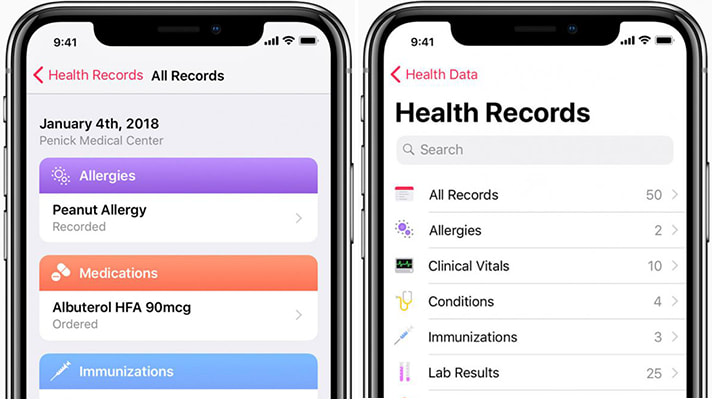
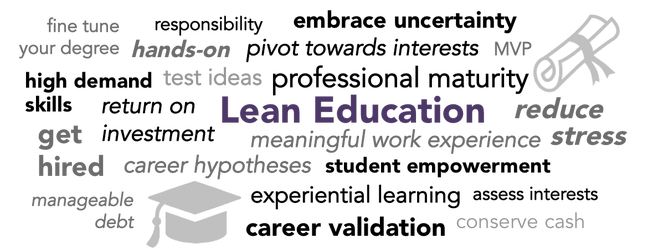
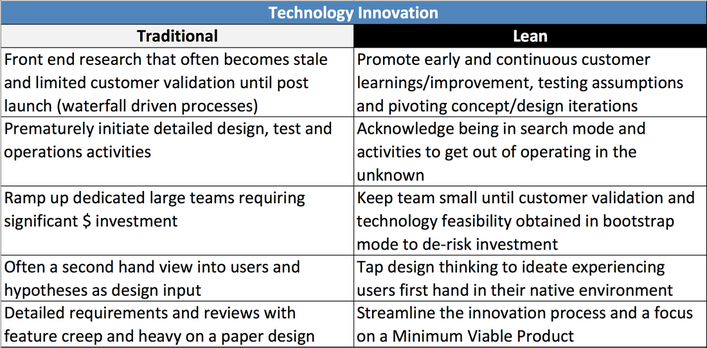
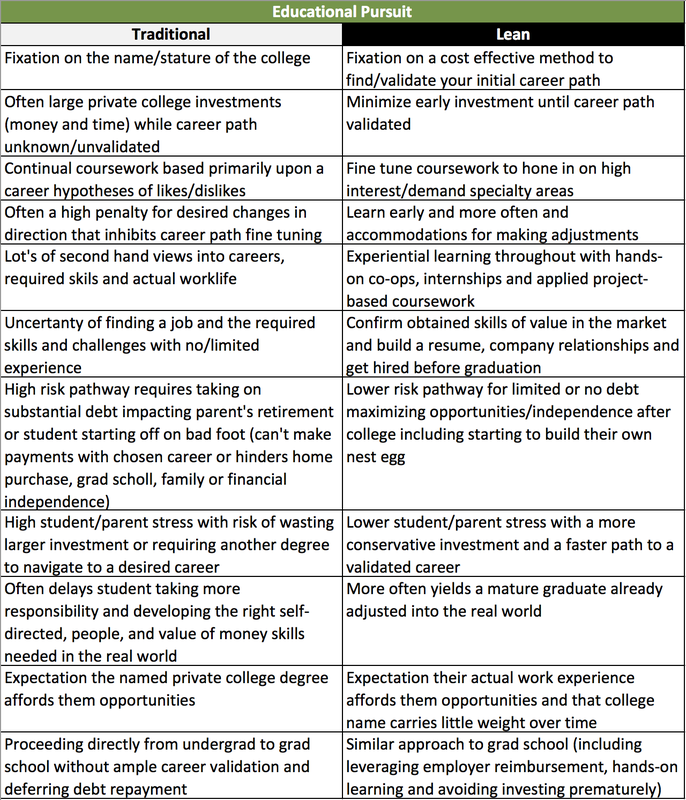
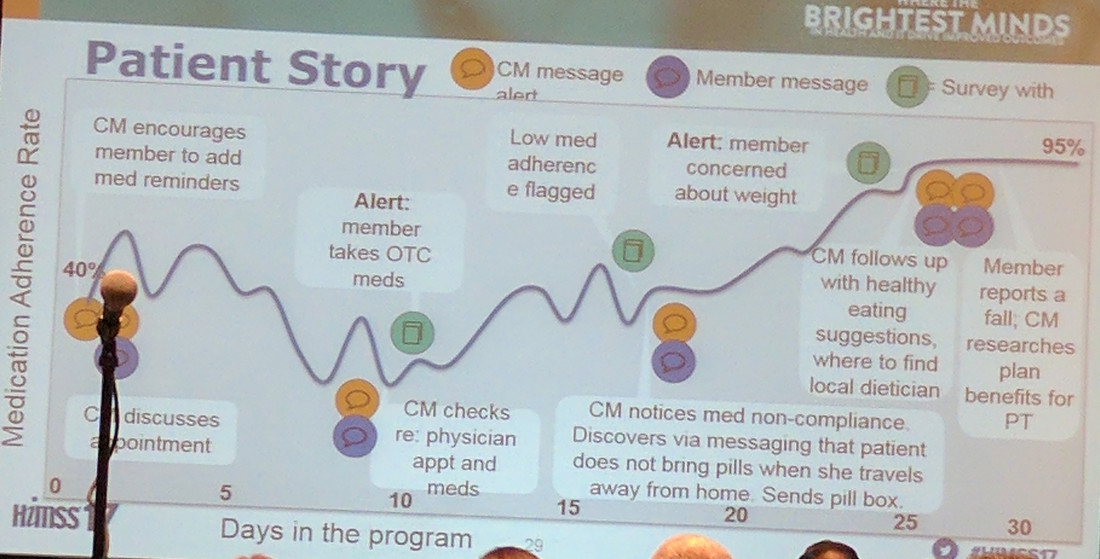

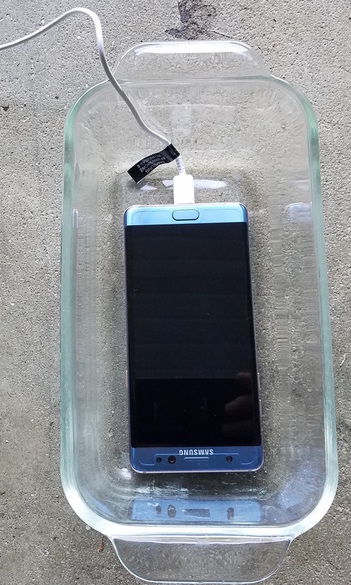
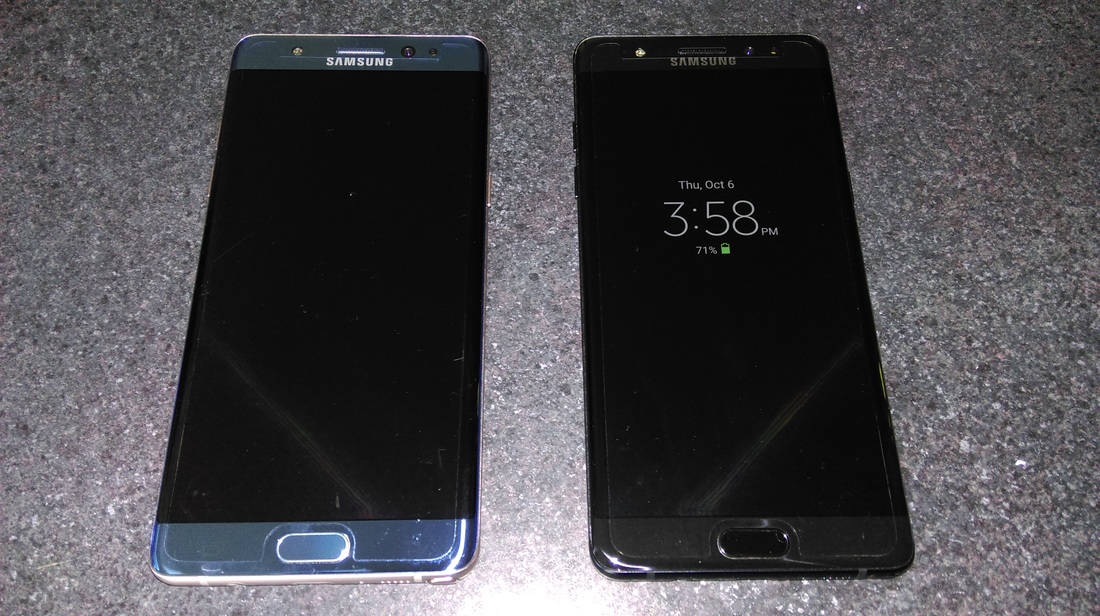
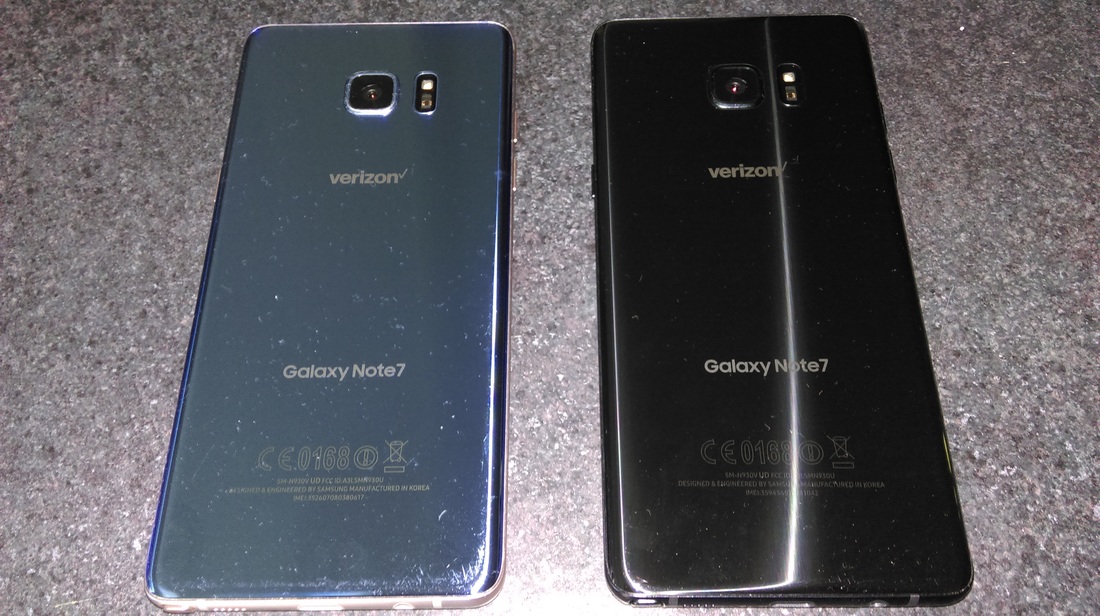
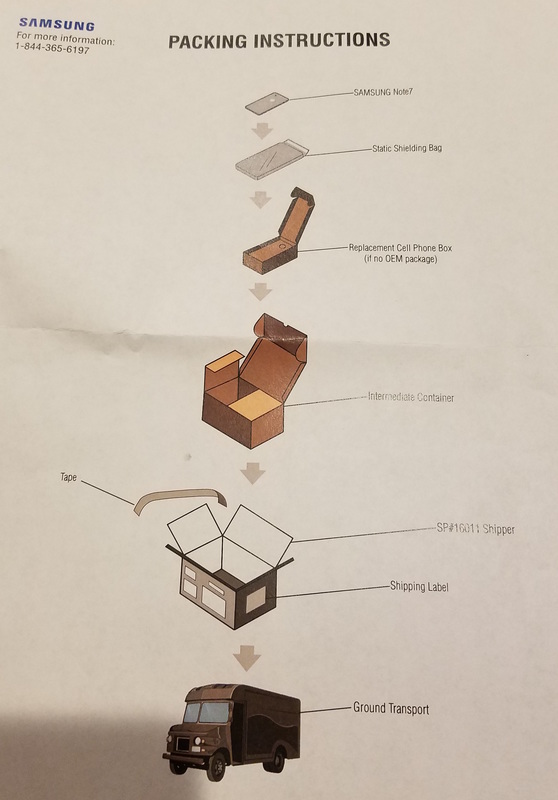
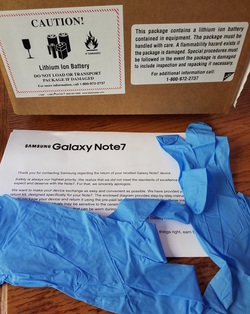
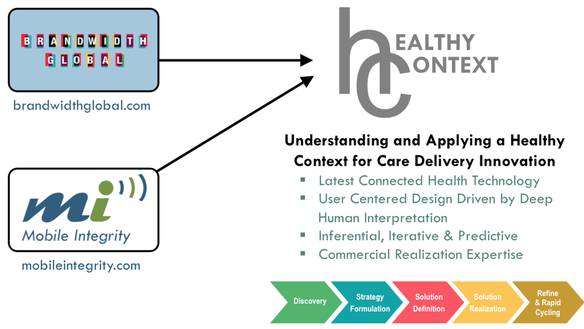
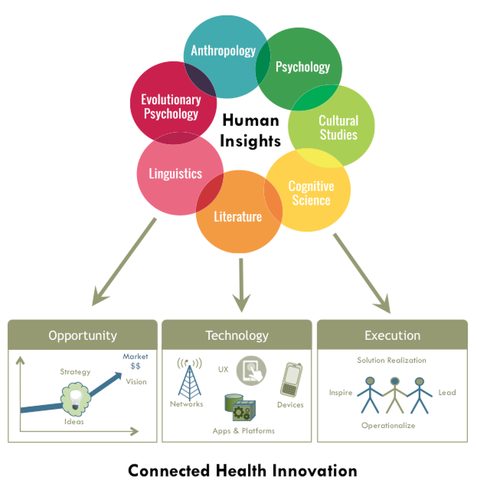
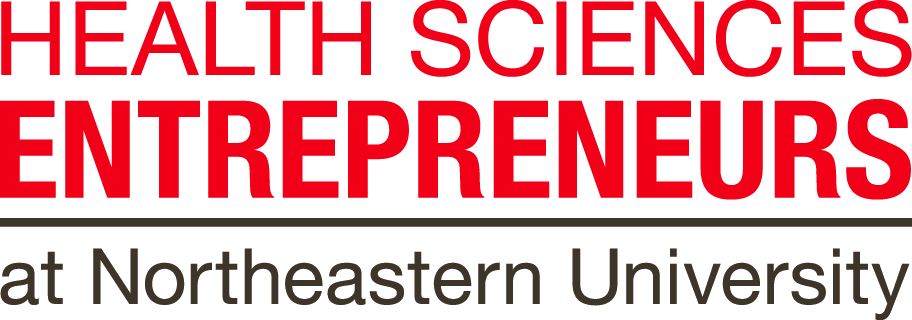


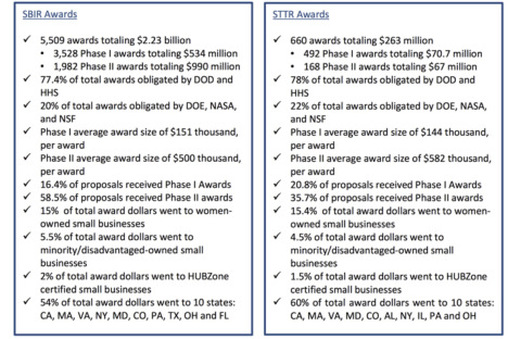

 RSS Feed
RSS Feed
